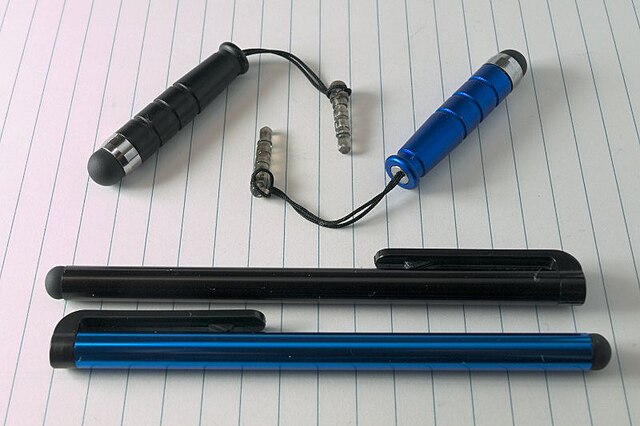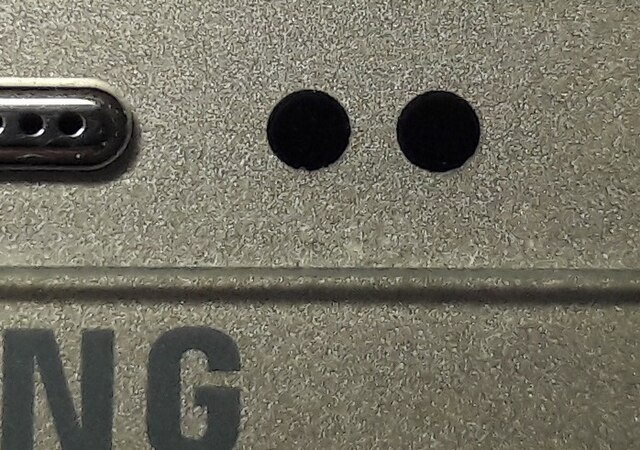In electrical engineering, capacitive sensing is a technology, based on capacitive coupling, that can detect and measure anything that is conductive or has a dielectric constant different from air. Many types of sensors use capacitive sensing, including sensors to detect and measure proximity, pressure, position and displacement, force, humidity, fluid level, and acceleration. Human interface devices based on capacitive sensing, such as touchpads, can replace the computer mouse. Digital audio players, mobile phones, and tablet computers will sometimes use capacitive sensing touchscreens as input devices. Capacitive sensors can also replace mechanical buttons.
Capacitive stylus
A proximity sensor is a sensor able to detect the presence of nearby objects without any physical contact.
An infrared proximity sensor
Optical proximity sensor in a 2016 Samsung smartphone. A proximity sensor is a standard feature of most smartphones, disabling the touchscreen when positioned near an ear during phone calls; more recent (late 2019-early 2020) smartphones with OLED displays may have the sensor mounted under the display.
Smartphone optical proximity sensor without the phone's casing. The sensor itself is the black object on top of the yellow block below it; this block is actually a printed circuit board serving as an interposer.
The pulsing proximity sensor of a BlackBerry Leap





